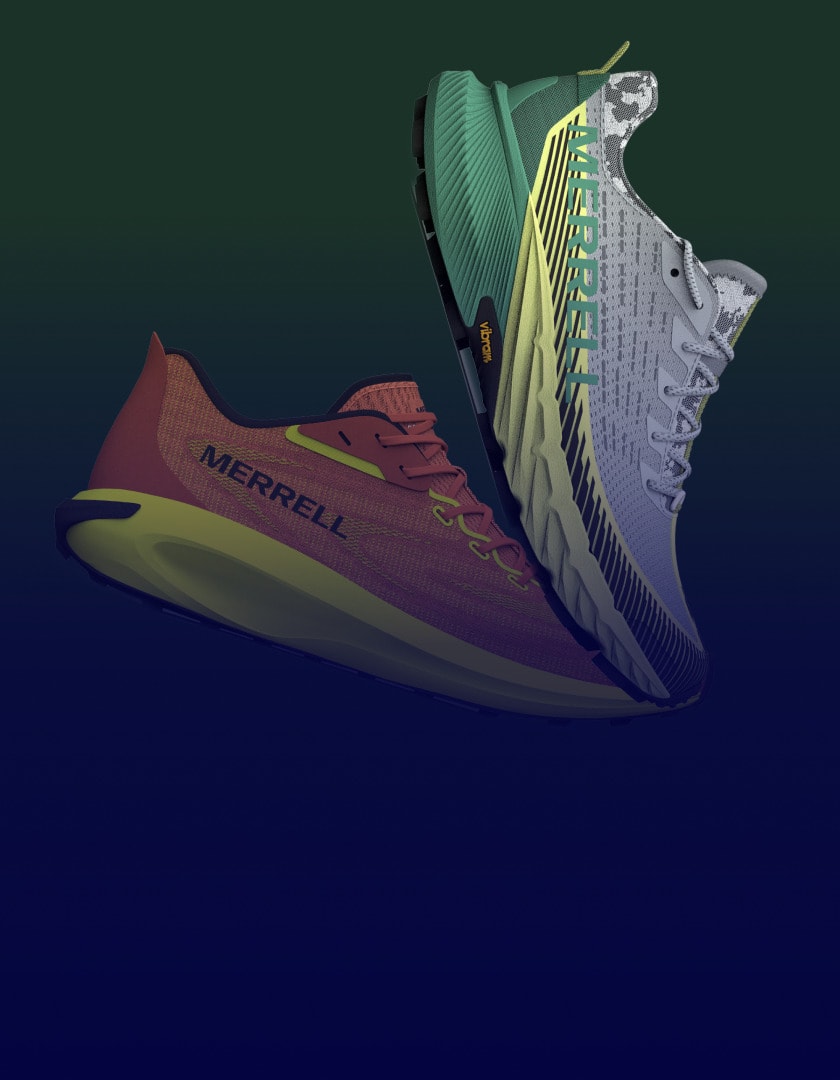RMA Defined: Understanding Return Merchandise Authorizations in Fashion and Retail

For today’s retail brands and manufacturers, offering an easy-to-use and customer-centric return process is critical to building trust and brand loyalty. According to a recent International Council of Shopping Centers survey, 82% of surveyed consumers reported that retailers’ return policies influenced their online shopping preferences.
A smooth and efficient return process can improve customer satisfaction, brand reputation, and even inventory control. And the foundation of a good return policy often starts with an RMA, or Return Merchandise Authorization.
In this guide, we’ll break down the meaning of RMAs and why they’re essential for retailers and manufacturers looking to build customer trust and loyalty. We’ll also look at the processes, tools, and steps you can use to make an effective RMA that works both for your brand and your audience.
What is an RMA?
RMA stands for Return Merchandise Authorization, a process that allows customers to return products they’re unsatisfied with or that are defective in some way. The RMA process is vital to maintaining customer trust and satisfaction, ensuring each customer has a clear and accessible way to address their concerns and initiate returns if needed.
But RMA is not just about handling returns: it’s an essential part of a brand’s customer service and logistics strategy that directly impacts inventory management, profitability, and overall brand perception.
The Role of RMA in Retail
In retail commerce, customer service is everything. A well-structured RMA process enhances the customer experience by providing a clear and transparent path for returning products with minimal effort.
Statistics show that customers who find it easy to return items are more likely to remain loyal to the brand, even after an initial negative experience with a product. By defining RMA processes clearly, businesses can ensure that customers feel valued and supported throughout their shopping journey, even after a purchase.
Impact on Brand Loyalty
Brand loyalty is not just about how customers feel when they purchase a product—it also includes their experience after the purchase. A seamless RMA process can significantly increase brand loyalty by demonstrating that the brand cares about the customer experience, even when things go wrong.
When customers know they can easily return a product, they are more likely to make a purchase, confident that a robust return policy protects them. According to a report commissioned by PayPal, 55% of surveyed consumers abandoned their potential purchases because the company didn’t offer a “convenient” return policy.
Inventory Management
Effective RMA processes are essential for managing returned stock. Returned items need to be efficiently processed, whether they are refurbished, resold, or discarded.
An efficient RMA system ensures that inventory is accurately updated, reducing the risk of stock discrepancies and ensuring that only sellable items remain in circulation. This improves inventory accuracy and contributes to better overall inventory management.
Reducing Losses
Returns can be costly, but a well-managed RMA process can help minimize these losses. Businesses can reduce the financial impact of returns by clearly defining RMA policies and integrating them with inventory management systems and other business platforms, like PLM software.
By reviewing return trends and data points, businesses can also identify patterns and take steps to reduce return rates, such as improving product descriptions or offering better customer support during the purchasing process.
If the same defects or problems crop up in a particular product, for example, an efficient RMA process can identify where those defects might occur and how best to fix or avoid them in the future. This could include changing a product’s design or switching vendors or suppliers.
The RMA Process in Retail and Fashion
For customers and businesses, the RMA process is relatively straightforward. The process typically begins when a customer experiences an issue with a product and requests a return.
The business then reviews the request and confirms the defect or problem. At this point, the company can also help remedy the situation before a return is finalized. Because returns are inconvenient and costly for both parties, it’s in everyone’s best interest to avoid a return when possible.
If the return is approved, the business will issue an RMA number, which tracks the return through the company’s “reverse” logistics process—the product’s lifecycle as it returns from a consumer to the vendor or manufacturer.
The customer returns the product, which is then inspected by the business. Depending on the outcome, industry, and product, the company may issue a refund, replacement, or repair. This process needs to be efficient and customer-friendly, ensuring that the customer feels supported throughout their journey.
It also needs to be spelled out in the company’s return policies so that expectations of a return or refund are clear from the start.
RMA Policies
Clear and fair RMA policies are essential in retail and fashion industries, where trends and seasons can quickly change. These policies should outline timeframes, conditions for returns, and customer responsibilities.
For example, some brands may require the product to be returned in its original packaging or within a specific time frame. Other brands may require that a product not be worn or used in order to be returned for a full refund. By defining these policies upfront, businesses can avoid misunderstandings and ensure the RMA process runs smoothly.
Integration with PLM Systems
Integrating RMA with Product Lifecycle Management (PLM) systems can streamline the return process. PLM systems provide a centralized platform for managing product information, and when combined with RMA processes, they can ensure that returned products are accurately tracked and managed.
This integration is especially beneficial in the fashion industry, where products have short life cycles, and timely information is critical. A PLM software can also ensure that changes made to a product based on customer feedback are available to all product development teams in real-time.
Technology and Automation in RMA
Technology plays a significant role in improving the efficiency of RMA processes. Automation, for example, can help businesses handle returns more quickly and accurately.
Automated systems can generate RMA numbers, track returns, and update inventory in real-time, reducing the need for manual intervention and minimizing the risk of errors.
Challenges and Solutions in Implementing RMA
Managing RMA processes can be challenging, especially for large retail and fashion brands. Common challenges include dealing with fraudulent returns, managing shipping costs, and handling damaged goods. These challenges can strain resources and impact profitability if not managed effectively.
RMA Solutions and Best Practices
To overcome these challenges, businesses can implement best practices such as setting clear RMA policies, using technology to track returns, and training staff to handle returns efficiently.
Successful RMA processes often involve close collaboration between multiple departments, including customer service, inventory management, and logistics. These collaborative efforts can be tracked in a PLM platform to ensure each department is up-to-date with all available data and trends.
Legal and Regulatory Considerations
Different regions may have varying legal requirements related to RMAs. For example, some areas may require businesses to accept returns within a certain period, while others may have specific regulations around refund processes.
Fashion brands must know these regulations to ensure their RMA policies comply with local laws.
Benefits of an Effective RMA System
An effective RMA system leads to higher customer satisfaction by providing a hassle-free return experience. Customers who know they can return products easily are more likely to trust the brand and make repeat purchases. A study from the IMRG Returns Review found that 92% of surveyed buyers who had a positive return experience went on to purchase from that brand again.
This trust is critical in building long-term customer relationships and enhancing brand loyalty. It can also help businesses move toward products, services, and processes that align more with customers’ wants and needs.
Better Data and Insights
RMA processes generate valuable data that can be used to improve product quality and customer service. By analyzing return reasons and patterns, businesses can identify areas for improvement, such as product design or marketing strategies.
This data-driven approach allows businesses to make informed decisions that enhance overall performance.
Cost Savings
Efficient RMA workflows can lead to significant cost savings by reducing the time and resources needed to handle returns. By eventually minimizing the number of returns through better product descriptions and customer support, businesses can also reduce costs associated with future potential returns.
Trends in RMA for Fashion and Retail
As retail and fashion brands lean more into technology to improve their product lines and customer service, artificial intelligence and machine learning are expected to play a significant role in the future of RMA.
These technologies can help businesses predict return rates, automate return processes, and even identify fraudulent returns. Brands looking to meet the needs of their customers consistently would be wise to stay up-to-date on how AI systems and large language models, or LLMs, can improve their return processes, now and in the future.
Sustainability Considerations
Sustainability is becoming increasingly important in the fashion and retail industries, and RMA processes are no exception. Brands are exploring ways to reduce returns and manage waste more effectively.
For example, some businesses are implementing programs that encourage customers to donate or recycle returned items rather than sending them to landfills. Other companies may implement “no return” policies because the cost of returning a product is greater than the actual cost of the product or its shipping expense.
Evolving Customer Expectations
Customer expectations constantly evolve, and businesses must adapt their RMA processes accordingly. Today’s customers expect fast and hassle-free returns, and brands that fail to meet these expectations risk losing customers.
As retail landscapes continue to change, businesses must stay ahead of trends and continually refine their RMA processes to meet customer needs.
Transforming Your Product Lifecycle Processes
RMA is a critical component of a successful retail and fashion brand’s customer service strategy. By understanding and effectively managing RMA processes, businesses can enhance customer satisfaction, improve inventory management, and reduce costs.
As technology and customer expectations continue to evolve, it’s essential for businesses to stay informed about the latest trends and best practices in RMA.
If you’re looking to improve your RMA and other product development processes, explore Centric Software’s solutions designed to streamline returns and enhance customer satisfaction. With the right tools and strategies, you can turn RMA into a competitive advantage for your brand.








